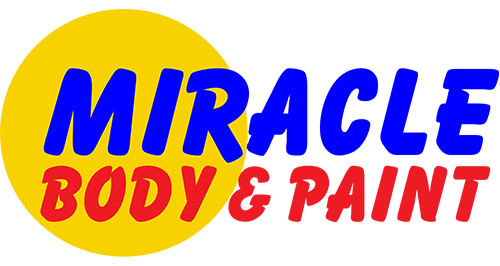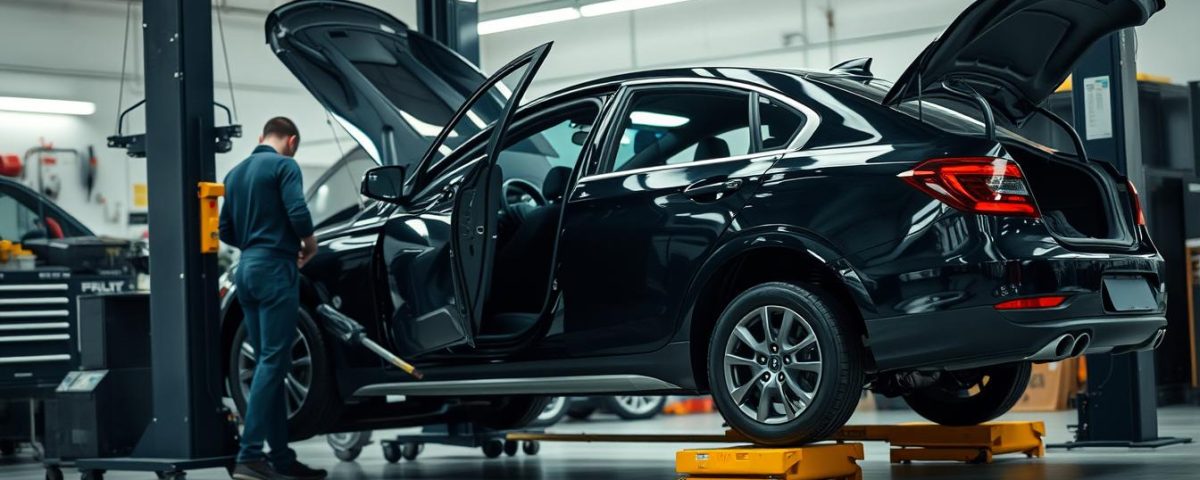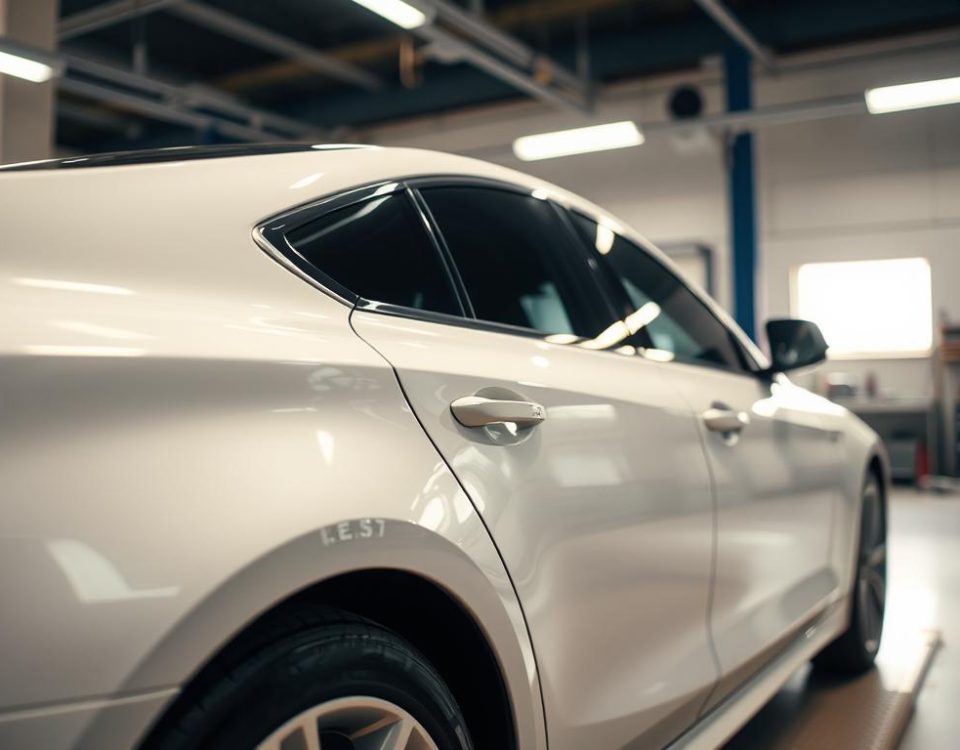
How Aftermarket Paint Protection Helps Maintain Your Car’s Value
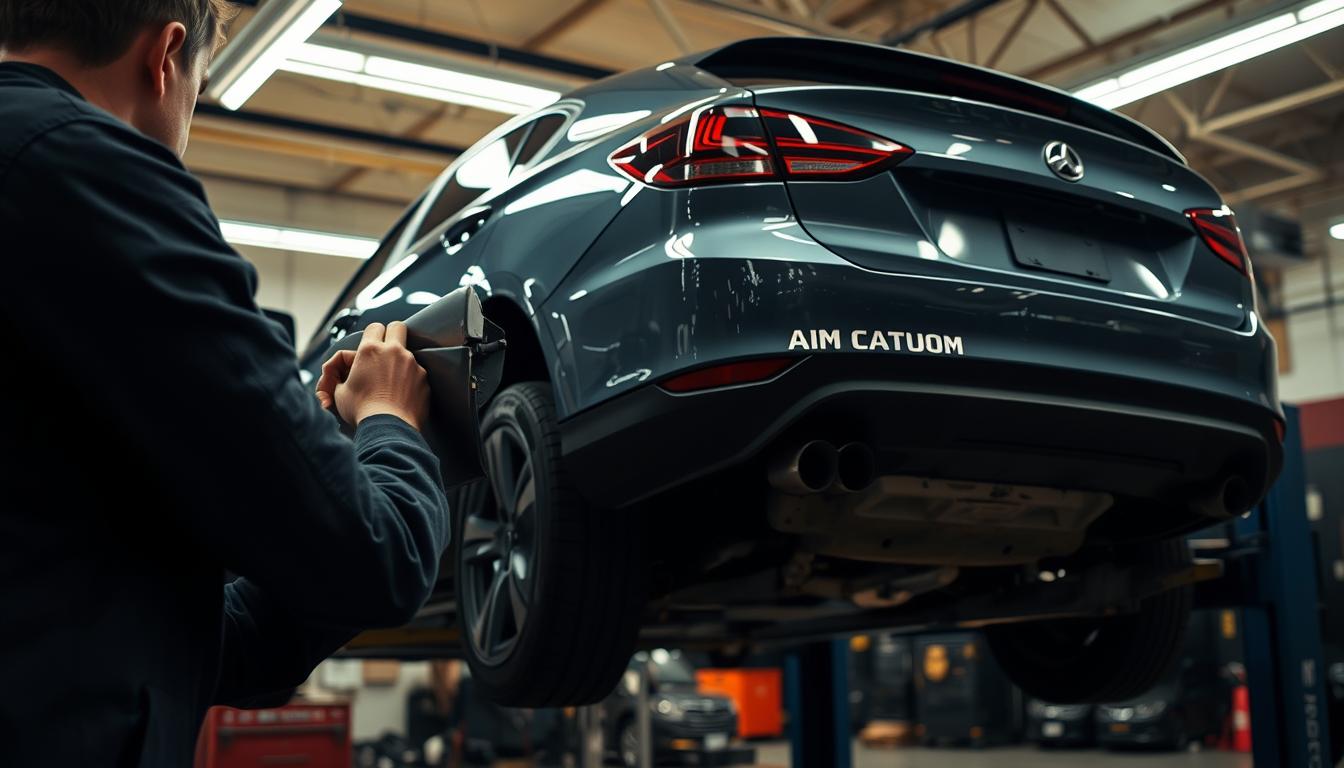
How We Fix Rear-End Collision Damage
When our lease is ending, we must think about the repairs needed. This can help us avoid extra fees. Knowing what a lease inspection covers is key to meeting the dealer’s standards.
Having a checklist for the end of the lease helps us check the car’s condition. We can fix any problems before returning it. This way, we save money and make sure the car looks good when we give it back.
Key Takeaways
- Assess your vehicle’s condition before the return.
- Familiarize yourself with lease return guidelines.
- Address all necessary repairs to avoid damage fees.
- Use an end-of-lease checklist to stay organized.
- Consider a professional lease inspection for peace of mind.
Understanding Lease Return Guidelines
Before we return a leased vehicle, it’s key to know the lease return guidelines. These rules help us finish our leasing journey well. A big part of this is the lease end inspections.
Importance of Lease End Inspections
Lease end inspections are very important. They check if the vehicle meets our lease agreement’s standards. This inspection finds any repairs needed before we return the car. Knowing what to expect can help avoid surprises.
Common Lease Return Policies
Every leasing company has its own return policies. Knowing these policies helps us prepare. Some rules talk about what wear and tear is okay and what we must do. Looking at our lease contract helps avoid confusion.
What to Expect During an Inspection
During an inspection, our vehicle’s outside and inside will be checked carefully. Inspectors look for damages that are not normal wear and tear. This might cost extra. Being ready for this check helps us fix any problems early and makes returning the car easier.
Identifying Wear and Tear
As we get ready to end our lease, it’s key to know the difference. We need to understand identifying wear and tear, normal wear, and excessive wear. Knowing this can really help us save money and make sure everything goes smoothly when we return the vehicle.
What Constitutes Normal Wear
Normal wear is small imperfections that happen over time. These can be:
- Light scratches that don’t go through the paint
- Scuffs on the bumpers or trim
- Slight fading or discoloration of the upholstery
These are usually okay in lease agreements and won’t cost us extra.
Signs of Excessive Wear
But, excessive wear can cause problems when we return the vehicle. Signs of this include:
- Deep scratches or gouges in the paint
- Significant tears or burns in the upholstery
- Major dents on the bodywork
Fixing these problems early can help us avoid extra costs when we return the vehicle.
Common Areas of Concern
When checking for wear and tear, we should pay special attention to:
- Exterior surfaces, like the bumpers and doors
- Upholstery and carpets inside
- Wheels and tires, where damage is easy to see
By keeping an eye on these areas, we can fix problems before the inspection.
Exterior Damage to Check For
Before we return our leased vehicle, we must check the outside for damage. Leasing companies look closely at the vehicle’s condition. Finding problems early can help avoid extra repair costs.
Dents and Scratches
We should look closely at dents and scratches. Even small marks can be seen as too much wear by the leasing company. It’s smart to note any damage and decide if fixing it is worth it to keep our deposit safe.
Windshield and Window Damage
Then, we need to check the windshield and windows. Windshield damage, like chips or cracks, is not safe and can cost money to fix. Fixing these problems before we return helps avoid trouble.
Wheel and Tire Condition
The state of the wheels and tires is also important. Worn-out tires or curb damage can cost a lot to fix. By checking this area well, we can avoid big repair bills.
Interior Damage Assessment
The inside of our car is very important when we return it. We need to check it well to be ready for the inspection. We should look at the seats, dashboard, and smells to make a good impression.
Upholstery and Carpet Cleaning
First, we should check the seats and carpets for stains or tears. A clean car looks better and might save us money. If there are tough stains, we should clean them right away to avoid extra costs.
Dashboard and Control Functionality
Then, we need to check if the dashboard works right. All buttons and screens should work well. This shows we took good care of the car.
Odor and Stains Removal
Lastly, we must get rid of bad smells. Smells from spills or pets can look like we didn’t take care of it. Cleaning well and using air fresheners can help us return the car smoothly.
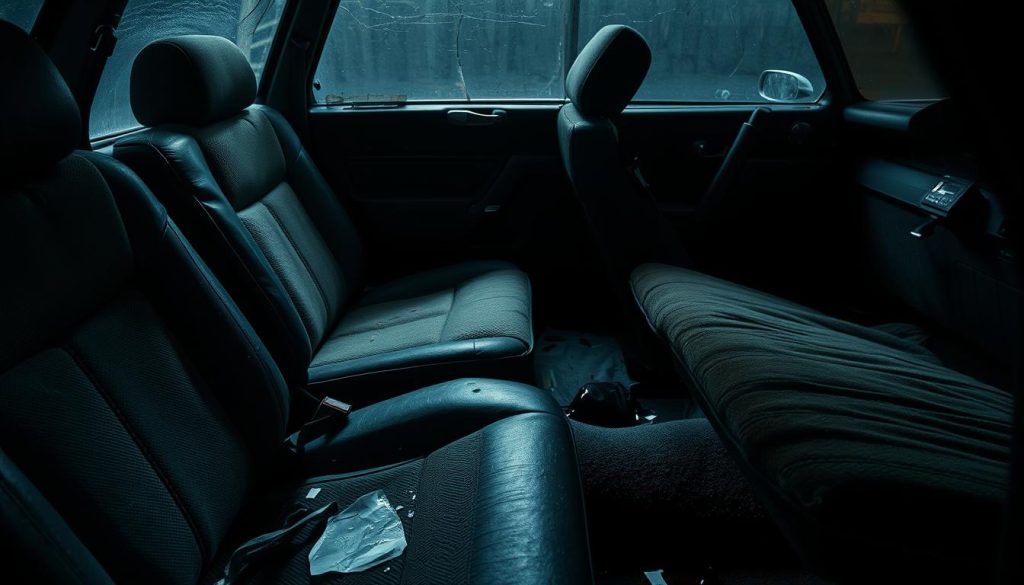
Mechanical and Electrical Repairs
Before we return our leased vehicle, it’s key to check the mechanical and electrical systems. This helps us avoid penalties and ensures safety for others. Let’s look at what we need to check.
Engine and Transmission Checks
Checking the engine is vital for our vehicle’s performance. Problems with the engine or transmission can cost a lot. We should check fluid levels, listen for odd noises, and test drive to see if everything works right.
Battery and Electrical System Inspection
Inspecting the electrical system is important to avoid future problems. We should check the battery, make sure all lights and electronics work, and look for wiring issues. This helps us catch problems early and avoid surprises when we return the car.
Brake and Tire Health
It’s crucial to check the brakes and tires. Worn-out brakes or tires can affect our safety and the lease return. We should check tread depth and look for vibrations or noises. Fixing these issues early makes returning the car easier.
Understanding Excess Mileage Charges
Mileage is key when we return a leased car. Knowing how it affects lease returns helps us avoid extra fees. Most leases have mileage limits. Going over these can lead to extra charges.
Watching our mileage closely can really help.
How Mileage Affects Lease Returns
Going over the mileage limit can hurt the car’s value. This can cost us money. Knowing how we drive affects the car’s return helps us make better choices.
Calculating Potential Fees
It’s smart to know how fees for extra miles are figured. Lease contracts usually say how much extra miles cost. By checking these rules, we can guess how much we might pay.
Preventing Additional Costs
Being proactive can stop extra mileage fees. Keeping track of miles and planning trips saves money. Setting a mileage goal that fits our lease helps avoid penalties.
Dealing with Modifications
When we think about making changes to our leased car, it’s key to know how these changes affect our lease return. Aftermarket parts might make our car better, but they can cause problems when we return it. Knowing what the leasing company says about changes is very important.
Effects of Aftermarket Additions
Aftermarket parts can make our car look or work better. But, they can make returning the car harder. Leasing companies usually want cars back the way they were.
Returning to Original Specifications
It’s important to know if we need to change our car back to how it was. Some leases say we must remove any changes before returning the car. Looking at our lease or talking to the leasing company can help us know what to do.
How to Handle Permanent Changes
If we’ve made changes that can’t be undone, we need to talk to our leasing company about penalties. These changes might lower the car’s value and cost us money when we return it. Talking to the leasing company early can help us avoid extra fees.
Preparing Documentation
Getting ready for our lease return is very important. It makes the process easier and helps avoid arguments about the car’s state. Keeping records of maintenance and repairs is key. It helps us when we talk about any damage claims.
Knowing what lease return paperwork is needed helps us meet the dealership’s needs.
Importance of Keeping Records
Keeping good records during our lease is important. It shows we took care of the car as promised. Having everything in order helps avoid problems when we return the car.
It also shows how the car has been over time.
Required Paperwork for Lease Return
Knowing what paperwork is needed for the lease return is key. Dealerships want to see we followed the lease rules. They might ask for:
- Original lease agreement
- Maintenance receipts
- Proof of insurance coverage
- Any prior damage reports
Vehicle History Report Essentials
A detailed vehicle history report is very helpful when we return the car. It shows we are honest and builds trust. It usually has:
- Odometer readings
- Accident history
- Service records
- Any major repairs performed
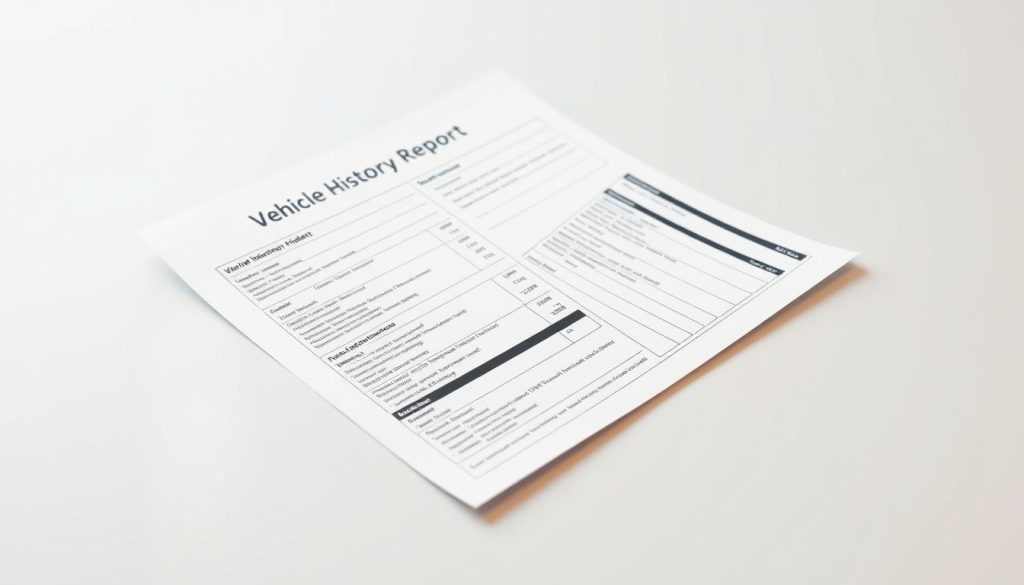
Getting Repairs Done
Before returning a leased vehicle, we must decide on repairs. We can do them ourselves or get a professional. Not all repairs are easy to do by ourselves.
DIY versus Professional Service
DIY repairs can save money and feel rewarding. But, they might not be as good as a pro’s work. Simple tasks like cleaning or oil changes are okay for DIY. But, complex repairs need a pro to meet lease standards.
Cost Estimates and Budgeting
Knowing the repair costs is key. Getting estimates helps us plan our budget. Whether DIY or professional, knowing the costs avoids surprises.
Timing Your Repairs
When we do repairs matters. Rushed repairs can be bad. Planning ahead lets us choose wisely. A pro like Miracle Body and Paint ensures quality, giving us peace of mind.
Returning the Vehicle
Returning the vehicle is a step-by-step process. It helps us follow our lease agreement. Knowing what to do makes the final check easier.
Steps to Follow When Returning
To make returning easy, follow these steps:
- Check the end-of-lease list to see if repairs are done.
- Book a return time.
- Make sure the car is clean inside and out.
- Keep records of any fixes done before returning.
- Be on time for the return.
What to Bring to the Return Appointment
Bring the right papers to the return meeting. Here’s what you need:
- The original lease contract.
- Proof of all repairs done during the lease.
- A vehicle history report for maintenance records.
- Any other needed paperwork.
Final Inspection Process
The inspector will check the car carefully during the final inspection. It’s key to answer their questions. This makes the inspection go smoothly.
Navigating Fees and Penalties
When we return our leased car, we need to watch out for extra fees. Knowing what leasing companies charge can avoid surprises. It’s important to know what’s fair and what’s not to manage costs.
Understanding Additional Charges
Leasing companies charge extra for damage or too much mileage. Reading our lease agreement is key. It tells us when we might face penalties. Knowing this can save us money and make returning the car easier.
Avoiding Hidden Fees
Hidden fees can be tricky to find. We should check our lease papers for extra costs. Fees for cleaning or small fixes are common. Being careful can help us avoid extra costs when we return the car.
Disputing Unfair Charges
If we get charged unfairly, we can fight it. Taking photos and keeping repair records helps our case. Knowing our rights is crucial for a fair deal.
Final Thoughts on Lease Return Repairs
As we get ready to return our leased car, it’s clear that fixing things on time is key. Fixing any problems before we return helps us avoid extra costs. It also shows we’re good leasers.
Keeping our car in good shape has many benefits. It helps us avoid fines and makes starting a new lease easier. A clean car shows we care and can help us get a good deal next time.
Thinking about our next lease, we should make sure our car is ready. Miracle Body and Paint in San Antonio can help us. They can make sure our car is perfect for returning.

